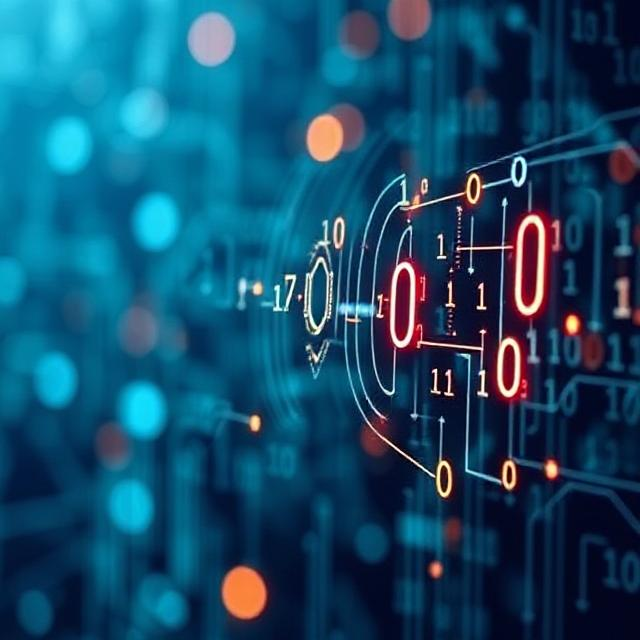In digital communication and data storage, accuracy is critical. However, data can be corrupted due to noise, interference, or hardware faults. To ensure reliable data transmission and storage, engineers use error detection and correction codes. These codes help identify and fix errors that may occur when data travels from one point to another or is read from memory. This article explains the basic concepts, types, and working mechanisms of error detection and correction techniques used in digital systems.

Why Errors Happen in Digital Systems
Data is represented in binary (0s and 1s), and even a single bit change can alter the meaning of the data entirely. For example, if 1001 becomes 1101 due to interference, the receiver interprets incorrect information. This is where error control coding plays a crucial role.
There are two main goals:
-
Error Detection – Identifying if an error has occurred.
-
Error Correction – Locating and correcting the error(s) without retransmission.
1. Error Detection Codes
These codes are designed to detect the presence of errors in data, usually by adding extra bits (called redundant bits) to the original message. Some of the most commonly used error detection techniques include:
a. Parity Bit
The parity bit is the simplest form of error detection.
-
Even Parity: Adds a bit to make the number of 1s in the message even.
-
Odd Parity: Adds a bit to make the number of 1s odd.
Example:
Original Data: 1010 (2 ones) → Even parity bit: 0 → Transmitted: 10100
If a single bit flips during transmission, the parity check at the receiving end will detect the inconsistency.
Limitation: Can only detect odd-number bit errors, not capable of correcting them or detecting even-number errors.
b. Checksum
The checksum is used in networking and data storage. It calculates a value based on the sum of the binary data chunks. The checksum is sent along with the data. The receiver recalculates it and compares it with the received checksum.
Use: Common in protocols like TCP/IP.
c. Cyclic Redundancy Check (CRC)
CRC is a powerful error detection method that treats data as a large binary number and divides it by a predetermined polynomial (generator). The remainder of this division (CRC bits) is appended to the data.
At the receiver’s end, the same division is performed. If the remainder is not zero, it indicates an error.
Advantages:
-
Detects burst errors (multiple bits flipped).
-
Used in storage devices, networking, and digital transmission.
2. Error Correction Codes
While detection helps in identifying errors, correction codes go a step further — they can pinpoint and fix errors without retransmission.
a. Hamming Code
Developed by Richard Hamming, this code can detect up to two-bit errors and correct single-bit errors.
Hamming codes work by adding redundant parity bits at specific positions in the data stream. These parity bits are placed at positions that are powers of two (1, 2, 4, 8, etc.).
Example (4-bit data: D3 D2 D1 D0)
Hamming adds three parity bits (P1, P2, P4):
Positions: [P1, P2, D3, P4, D2, D1, D0]
The values of parity bits are calculated based on XOR rules.
At the receiver, the bits are rechecked. If there’s an error, its position is identified by the pattern of failed parity checks.
Advantages:
-
Efficient for small data blocks.
-
Can correct single-bit errors in real time.
b. Reed-Solomon Code
Used in CDs, DVDs, QR codes, and satellite communication, Reed-Solomon codes are block-based error correction codes that can detect and correct multiple random symbol errors.
These codes work on symbols (not bits), and use polynomial math over finite fields to encode and decode messages. They are excellent for correcting burst errors.
Use cases:
-
Optical media
-
Digital TV
-
Data transmission over unreliable channels
c. Convolutional Codes
Instead of processing data in blocks, convolutional codes encode data as a stream using shift registers. The output is generated by combining current and previous input bits through modulo-2 operations.
Decoding often uses the Viterbi Algorithm, which analyzes the received stream and finds the most likely original data path.
Use cases:
-
Wireless communication
-
Satellite and space missions (NASA)
Error Correction vs. Detection: Key Differences
| Feature | Error Detection | Error Correction |
|---|---|---|
| Purpose | Find if an error exists | Find and correct the error |
| Complexity | Lower | Higher |
| Redundant bits | Fewer | More |
| Retransmission | Required | Not required |
| Examples | Parity, CRC | Hamming, Reed-Solomon |
Applications in Real Life
-
Computers and Memory (RAM/Cache): Use ECC (Error Correcting Code) memory to correct single-bit errors on the fly.
-
Hard Drives and SSDs: Use advanced CRC and ECC techniques to maintain data integrity.
-
Communication Systems: Every network protocol from Ethernet to Wi-Fi uses error detection, often with retransmission if needed.
-
Consumer Electronics: CDs, DVDs, and Blu-rays use Reed-Solomon codes to play back error-free content despite physical scratches or dust.
Conclusion
Error detection and correction codes are the backbone of reliability in digital electronics. They ensure that despite noise, interference, and hardware imperfections, systems can continue to function accurately and reliably. While error detection flags issues, correction methods fix them—often automatically. Understanding these techniques is essential for anyone working in electronics, computing, data transmission, and communication engineering.
Tags: Accuracy, binary data, bit errors, block-based codes, Blu-rays, burst errors, cache, CDs, checksum, communication engineering, Communication Systems, computing, convolutional codes, CRC, cyclic redundancy check, data integrity, Data storage, Digital Communication, digital transmission, DVDs, ECC memory, Electronics, error control coding, error correction, error detection, Ethernet, even parity, finite fields, generator polynomial, Hamming code, hard drives, hardware faults, Interference, modulo-2 operations, Networking, noise, odd parity, optical media, parity bit, parity checks, polynomial math, QR codes, RAM, real-time correction, redundant bits, Reed-Solomon code, reliable transmission, Richard Hamming, Satellite communication, shift registers, single-bit error correction, space missions, SSDs, storage devices, symbol errors, TCP/IP, Viterbi algorithm, Wi-Fi, wireless communication

